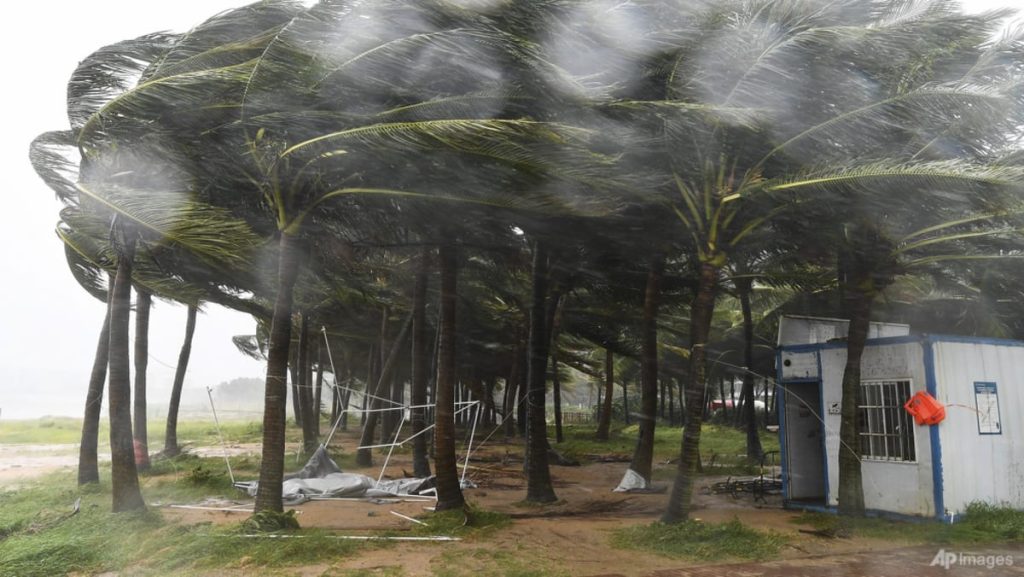Super Typhoon Yagi, the strongest storm in Asia this year, made landfall in China’s Hainan province on Friday, bringing powerful winds and heavy rain that caused power outages and disruptions. With winds reaching speeds of 234kmh, Yagi is the second most powerful tropical cyclone in 2024, following Hurricane Beryl in the Atlantic. The storm had intensified significantly after causing 16 deaths in the Philippines earlier in the week.
After hitting Wenchang in Hainan, Yagi caused power outages affecting around 830,000 households in the region. A team of 7,000 emergency workers was mobilized to repair the damage and restore power to affected areas. By Friday night, power had been restored to 260,000 households. Prior to the storm’s arrival, Hainan had cancelled flights, ferries, and closed businesses, urging its 10 million residents to stay indoors.
In addition to Hainan, Yagi had already impacted Hong Kong, Macau, Guangdong province, and airports in Vietnam. The storm is expected to continue towards Laos, causing further disruptions in its path. Authorities in these regions had taken precautionary measures, shutting schools, businesses, and transport links ahead of the storm. The impact of Yagi was felt across various countries in the region, with widespread disruptions to daily life and travel.
Yagi’s arrival in China marked the most severe typhoon in the Pacific basin this year, causing significant damage and power outages in affected areas. The storm’s powerful winds and heavy rainfall posed a threat to residents and infrastructure in its path. Emergency response teams worked tirelessly to restore power and help those affected by the storm. The impact of Yagi highlighted the vulnerability of coastal regions to severe weather events and the importance of preparedness and response measures.
As one of the strongest storms of the year, Yagi served as a reminder of the destructive potential of typhoons and hurricanes in the Pacific region. The storm’s intensity and impact on multiple countries underscored the need for coordinated efforts in disaster response and recovery. The lessons learned from Yagi’s passage through Asia would help authorities and communities better prepare for future extreme weather events and minimize the loss of life and damage to infrastructure.
Despite the challenges brought by Super Typhoon Yagi, communities in affected areas showed resilience and solidarity in the face of adversity. The efforts of emergency response teams and the cooperation of residents helped mitigate the impact of the storm and facilitated the recovery process. As the region continues to grapple with the aftermath of the typhoon, the experience of facing such a powerful natural disaster will shape future disaster preparedness and response efforts in the region.


